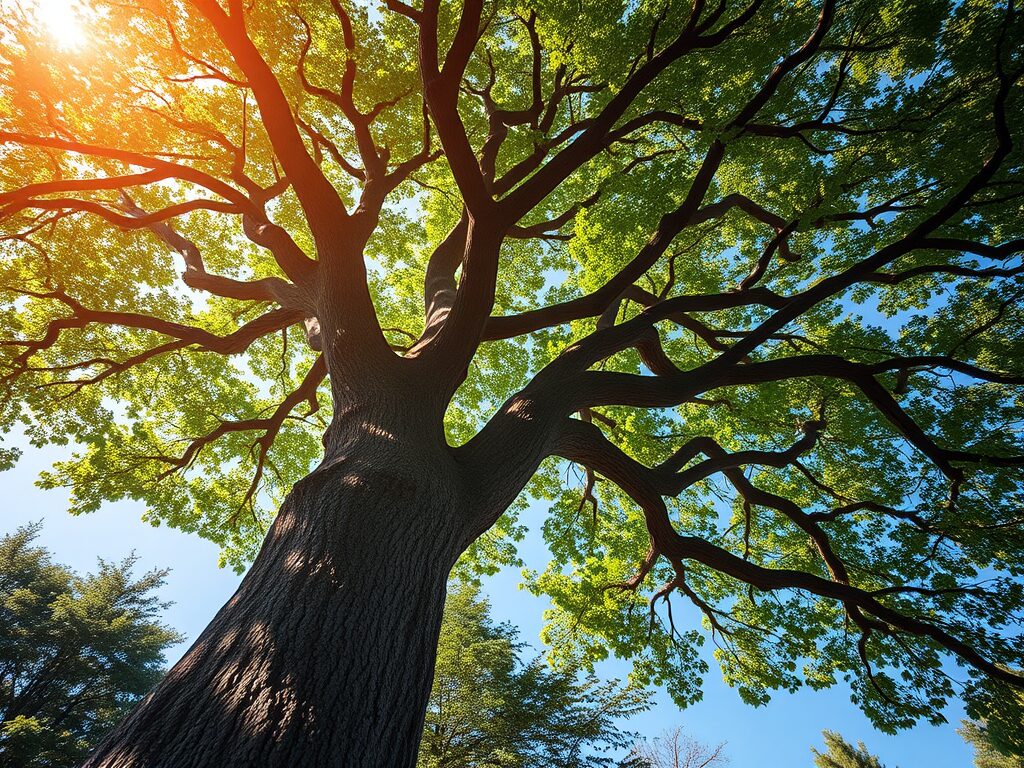We have nearly reached a time when climate change and global warming (and even the incorrect and confused ‘ozone’ – see our blog on ‘Misconceiving Physical Geography’) are everyday topics of conversation. Political figures and campaigners along with the great work completed in communities, including schools, have driven the topic and challenged the agenda. While we see the topic gaining traction and a steer in the right direction in terms of a solution, teaching climate change and the adaptations/mitigation is often a challenge. We are exploring a topic on a global scale with units expressed in gigatons and actions, and consequences, across land, sea and air. In this post, we discuss briefly an activity that can be completed on the school grounds (or locally) to examine the amount of carbon a single tree takes in annually. This is then compared against the emissions associated with everyday life such as playing on an XBox (not part of everyone’s life I know, but perhaps helpful for some of the young people we’re teaching!).
What is the relevance of this in geography?
As geography teachers, we curate a geography curriculum and education for our students. For us, with more life and geography experience it is easier to see geography as opposed to students who are still constructing the various schema to understand the world we live in. Climate change is a topic we need to be clear about in identifying where the geography is. I can almost guarantee that your science department is also teaching it- so where is the geography?
This will of course come down to your own interpretation and beliefs about concepts that make up geography. David Hicks’ article (2013)[1]– ‘A post-carbon geography’ challenges schools and geography teachers to build the foundations and develop a curriculum that prepares for a post-carbon future. “This is why I believe there need to be four dimensions in any investigation of such issues. These are: 1. Knowing – what do we need to know about this issue? 2. Feeling – what are our hopes and concerns in relation to this issue? 3. Choosing – what are our options? 4. Acting – what are others doing/might the school want to do in relation to this issue?”
We can pick out from here geographical knowledge, global issues (including scale), physical and human processes as well as the theme of actions, perhaps even sustainability.
The use of this activity adds a personal connection to the global issues where students have the opportunity to delve into a tricky topic, perhaps even wrestling with the basic ideas we might expect at A-level in the carbon cycle topics. It also brings part of the topic to a manageable scale with something that can be seen, observed and discussed in the field.
Thinking geographically, in reality, should be part of daily life. After completing this activity will students ever look at a tree the same again?
Methodology
Whilst I can’t verify the accuracy of the methodology suggested by Natural Resources Wales (see the references for the links to the two sources) the outcome of the calculations felt about right and matched well to the cards on the amount of carbon released to power things in daily life. I do extend a large thank you to Natural Resources Wales for putting these together.
In essence the ‘Carbon Storage Calculator’ is a step-by-step guide which includes a worked example. Students need to identify the tree- this proved to be one of the most challenging parts. It would be worth having some classification cards or a phone app to support students with this. A string and a ruler stick worked well to measure the circumference of the trunk to work out the approximate age of the tree and then across onto its dry weight to calculate carbon intake. Calculators were generally needed for this.
The task sheet is set out well to allow several trees to be calculated, this provides a good inject opportunity to discuss whether all trees are equal with regards to their carbon uptake.
File 1: Carbon Storage Calculator from Natural Resources Wales[2]
Following on from this the ‘carbon equivalent’ cards can be put to use to compare the carbon intake of the trees to several activities. The resource has several including flights, cars etc, the below has the X-Box card which proved to be of most interest.
File 2: Carbon equivalents from Natural Resources Wales[3]
Of course, this activity is no use in isolation, but it could prove to be a useful way to engage pupils in a new way and get them to think about their local surroundings (or school grounds) and also begin to make better links between their lifestyle choices (or perhaps those of their parents/whoever is at home!) and the potential impact this may have on climate.
Questions to pose which will help provide meaning to the activity:
- Does the type of tree planted matter?
- Does the location of the tree on the earth matter?
- Why are the emissions from your XBox not as simple as it might seem? (Hint: source of energy)
- What are the physical systems at play?
- What are the human systems that play a role in climate change and solutions?
- How do the human and physical systems interact?
- Is carbon capture through tree planting alone enough to solve the problems faced? (is anthropogenic climate change an easy fix? “Just plant some trees”)
- What hope does tree planting give to us?
- How does our learning today apply to your life?
We look forward to your feedback on this – if you use it in class or with your pupils please do let us know on our Facebook or Twitter pages, or by adding a comment below the blog.
References:
[1] https://www.geography.org.uk/Journal-Issue/f6f7e3b0-00ca-43eb-98eb-b79d16d3de6d
[2] https://cdn.naturalresources.wales/media/687190/eng-worksheet-carbon-storage-calculator.pdf
[3] https://cdn.cyfoethnaturiol.cymru/media/687189/eng-resource-cards-carbon-equivalents.pdf

Leave a Reply